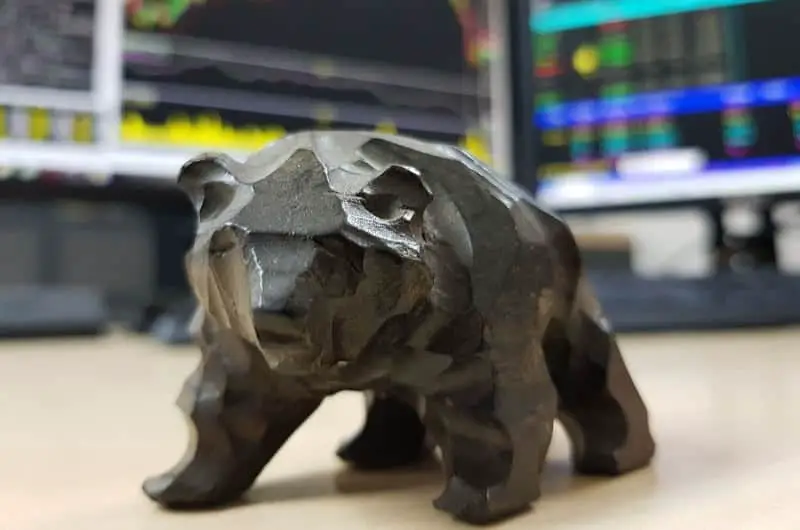The more you delve into investment strategies, the more you seek methods of investing at lower prices or when the market is volatile.
Some newbies prefer to stay out of the market when it’s volatile; well, they may be staying out for a long time because the market is volatile for the most part. One strategy experienced investors use to buy at the best price is “Dollar-cost Averaging.”
Dollar-cost averaging is a method of reducing the effect of volatility by purchasing your fund or stock over some time, so you don’t buy at high point prices. Using this strategy, you invest your money at regular intervals and equal proportions, not minding which direction the market or investment is going. That is, you will still buy the shares or investments irrespective of the changes in prices.
This method can also serve as a risk management strategy, potentially reducing the impact of instability on the overall purchase.
For example, this method would be excellent if you purchase more shares of stock when the prices are lower than when they are higher. If done correctly, your portfolio can benefit from it significantly.
Dollar-cost averaging helps ensure that you are not dumping all your money during a high point price by smoothening the buying price over time.
This strategy can be a vital one during the bear market by allowing you to buy at “oversold price,” or buy when stocks are relatively low points when many investors are unsure and scared to buy.
Using this method means you will be buying or investing when the market is down. Also, that’s when investors score great deals.
How Dollar-cost Averaging Works

To have a good grasp of how you can benefit from dollar-cost averaging, we need to put out some figures and compare them with other buying methods like purchasing with a lump sum, buying when the market is flat, etc.
Here are some examples to help you understand how dollar-cost averaging will help your investment strategy.
Baseline Example: Lump-sum Purchase
Let’s start with a scenario of a $20,000 lump-sum purchase of PFG stock at $100; that should buy you 200 shares. Then, assuming the share reaches the prices in the table when you want to sell, let’s see what your profit or loss will be in the table below.
| Sell Prices | No. of Shares | Profit/Loss |
| $80 | 200 | -$4,000 |
| $120 | 200 | $4,000 |
| $160 | 200 | $12,000 |
Now let’s see how the dollar-cost averaging works by comparing this example with other scenarios.
Second Example: In a Bear Market

This is where dollar-cost averaging works best for your portfolio—assuming that $20,000 is spread equally over four purchases at different prices every quarter within a year. Your stocks will look like this;
| 1st Month $5,000 At $100 per share = | 50 Shares |
| 2nd Month $5,000 At $80 per share = | 62.5 Shares |
| 3rd Month $5,000 At $60 per share = | 83.3 Shares |
| 4th Month $5,000 At 50 per share = | 100 Shares |
| Total = | 295.8 Shares |
Those $5,000 purchases will buy you more shares than you would have bought using a lump-sum strategy. Now, let’s look at the likely profits at the same selling prices in the baseline example;
| Sell Prices | No. of Shares | Profit/Loss |
| $80 | 295.8 | -$3,664 |
| $120 | 295.8 | $15,496 |
| $160 | 295.8 | $27,328 |
From the illustration, dollar-cost averaging gave you an overall profit at $80 per share of PFG shares lower than when you first started buying the shares.
Although you had more shares than in the lump-sum scenario, your portfolio grew rapidly as the stock price appreciated, with your total profit at $160 sale price more than doubled.
Third Example: In a Bull Market

Let’s see what dollar-cost averaging looks like in a rising market. Assuming the same $20,000 is split into four installments at $100, $130, $140, and $160 in a bullish trend. Your stocks will look like this;
| 1st Month $5,000 At $100 per share = | 50 Shares |
| 2nd Month $5,000 At $130 per share = | 38.5 Shares |
| 3rd Month $5,000 At $140 per share = | 35.7 Shares |
| 4th Month $5,000 At 160 per share = | 31.2 Shares |
| Total = | 155.4 Shares |
In this scenario, your $20,000 will only net you 155.4 shares. Now, let’s see what your payoff will be if you sell at the same prices we have been using.
| Sell Prices | No. of Shares | Profit/Loss |
| $80 | 155.4 | -$7,564 |
| $120 | 155.4 | $1,352 |
| $160 | 155.4 | $4,864 |
During bullish market is one of the instances where dollar-cost averaging seems weak in the short term. The higher the prices move, the more unlikely the dollar-cost average to be profitable for your portfolio, especially when compared to a lump-sum purchase.
However, except you are chasing short-term profits, these types of incidents rarely happen in real life. Stocks are naturally volatile, such that a bullish trend can quickly turn bearish, and you can apply the dollar-cost averaging at the lower price by taking advantage of the dip.
Fourth Example: In a Flat Market
The performance of dollar-cost averaging during a flat or sideways market is neither here nor there because the market in an up and down mode. For example, if you split the $20,000 equally among four purchases at $100, $80, $120, and $110. You will have something like this;
| 1st Month $5,000 At $100 per share = | 50 Shares |
| 2nd Month $5,000 At $80 per share = | 62.5 Shares |
| 3rd Month $5,000 At $120 per share = | 41.7 Shares |
| 4th Month $5,000 At 110 per share = | 45.5 Shares |
| Total = | 199.7 Shares |
The total number of shares is approximately the same as the lump-sum scenario, and the payoff will look nearly the same; that is, you are neither good nor worse off.
The Upside of Dollar-cost Averaging

The dollar-cost averaging method works best during a bear market or when the prices of investments are down.
You get to buy at low prices and sell when the trend changes to bullish. Although it is impossible to time the market, this strategy eliminates your guesswork and minimizes your risk.
Additionally, the dollar-cost average helps you take care of the emotional aspect of your investment by helping you stick to the same amount regardless of the fluctuations and ultimately helping you avoid the temptation of trying to time the market.
For example, when prices fall, investors always become jittery. When the market goes back up, they would have missed out on the opportunity to buy at reasonable prices. Alternatively, some investors might want to jump in when the market goes back up, but they could be doing it at a higher price and when the trend is about to turn.
When you use the dollar-cost average strategy, you buy more shares of an investment at lower prices and fewer shares when the price is high. As a result, you can end up paying a lower average cost per share over time.
And by spreading your purchases over some time, as opposed to lump-sum purchases, dollar-cost can help you mitigate losses in the event of further drastic fall in the market.
The Downside of Dollar-cost Averaging
With dollar-cost averaging, you are likely to miss out on potential higher profits. Suppose the market changes to a bullish trend when you are dollar-cost averaging.
In that case, you will likely miss out on possible huge gains compared to having invested a lump sum. When you dollar-cost average, you have to keep some level of cash over some time. This money generates zero returns for you.
According to a 2012 Vanguard Study of three major markets, United States, United Kingdom, and Australia, historically investing money in lump sum performs 66% better than investing using the dollar-cost average method.
“We conclude that if an investor expects such trends to continue, is satisfied with his or her target asset allocation, and is comfortable with the risk/return characteristics of each strategy, the prudent action is investing the lump sum immediately to gain exposure to the markets as soon as possible.” The Study Author
Lastly, note that you have held the money for some time with no returns, and you are still going to incur brokerage fees at every interval when you want to invest. These fees have a way of eating into your returns over time.
Bottom Line
Generally, the dollar-cost average works best in the bear markets and with instruments that experience swings up and down. It helps to reduce your anxiety and fear of missing out on opportunities.
Also, this strategy can be great for beginners who want to follow a preset approach, so they are not exposed to wild swings in the market. Active strategizing and lump sum might work better for the more experienced investor.
I’m interested in reading from you. What strategy has worked best for you? Have you had to change your methods at some point? Which techniques work best for some securities? Let’s talk.

